#Film Making Course In Amritsar
Text
XL Multimedia and Animation Course offers a comprehensive range of courses that cover a wide variety of topics in the fields of graphic designing and animation. With courses designed by industry experts, students are guaranteed to receive high-quality training that will equip them with a thorough understanding of 2D and 3D animation, character design, digital painting, and visual effects.Our course offerings are tailored to suit the needs of students who are looking to pursue a career in the graphic designing and animation industry. Our international diploma courses in graphic designing, digital marketing, video editing and compositing, VFX, 3D animation, film making, camera handling and cinematography techniques, website designing, and website development provide a well-rounded education that prepares students for jobs around the world.
One of the main benefits of enrolling in our courses is the potential for lucrative job opportunities. Upon completion of our courses, students can expect to start earning between 15 to 25,000 in Amritsar, India. We believe in providing students with practical skills that are in demand in the job market, so that they can quickly start their careers and make a meaningful impact in their chosen field.
At XL Multimedia and Animation Course, students will learn from professional experts who are well-versed in industrial tools and techniques. Our instructors are committed to helping students achieve their goals, and provide individualized attention to ensure that each student can progress at their own pace. Additionally, we organize monthly contests to help candidates improve their abilities and get an assessment of their progress.
Our courses are designed to be accessible to everyone, regardless of their background or level of experience. Whether you are a beginner or an experienced professional, our courses will provide you with the knowledge and skills you need to succeed in the graphic designing and animation industry.
At XL Multimedia and Animation Course, students will learn from professional experts who are well-versed in industrial tools and techniques. Our instructors are committed to helping students achieve their goals, and provide individualized attention to ensure that each student can progress at their own pace. Additionally, we organize monthly contests to help candidates improve their abilities and get an assessment of their progress.
#Graphic Designing Course In Amritsar#Graphic Designing Institute#Best Graphic Designing Academy#Graphic Designing Academy#Digital Marketing Course In Amritsar#Digital Marketing Institute#Best Digital Marketing Academy#Digital Marketing Academy#Website Designing Course In Amritsar#Website Designing Institute#Best Website Designing Academy#Website Designing Academy#Camera Training And Handling Course In Amritsar#Camera Training And Handling Institute#Best Camera Training And Handling Academy#Camera Training And Handling Academy#Film Making Course In Amritsar#Film Making Institute#Best Film Making Academy#Film Making Academy#Acting Course In Amritsar#Acting Institute#Best Acting Academy#Acting Academy#Cinematography Course In Amritsar#Cinematography Institute#Best Cinematography Academy#Cinematography Academy#Architecture Course In Amritsar#Architecture Institute
1 note
·
View note
Text
XL MULTIMEDIA AND ANIMATION STUDENT WORK
Our experienced mentors are passionate about teaching and will guide you through the learning process to help you achieve your goals. You'll learn how to use different video editing tools, build character and wire-frame models, and edit movies with precision and efficiency. Our courses are designed to equip you with the skills and knowledge you need to succeed in the creative industry, whether you're pursuing a hobby or looking to start a career.
We provide a supportive learning environment that fosters creativity and skill development. Our mentors are dedicated to helping students unlock their full potential and achieve their goals. Our courses are tailored to meet the needs of individual students, and our mentors provide one-on-one guidance and feedback to ensure that you make progress.
At XL Multimedia Amritsar, we offer a wide range of courses to individuals who want to learn how to harness their creativity and technical skills. Our courses cater to both beginners and professionals, and our experienced mentors will guide you through the learning process to help you achieve your goals.
If you're interested in learning more about our courses, don't hesitate to get in touch with our operator at +91-9781933000. We offer courses in graphic designing, digital marketing, website designing, camera training and handling, film making, acting, cinematography, architecture, videography, photography, game designing, video editing, and VFX.
#Film Making Course In Amritsar#Film Making Institute#Best Film Making Academy#Film Making Academy#Acting Course In Amritsar#Acting Institute#Best Acting Academy#Acting Academy
0 notes
Text
Visit the best multimedia institute in Amritsar . Discover the fascinating world of animation with Amritsar’s best animation training program of Maac institute of Amritsar .With a focus on character design, 2D and 3D animation, and visual narrative .
0 notes
Text
XL Animation Multimedia
XL Multimedia has more than 15 years of experience in the field of Media and Entertainment. XL Multimedia is Asia’s head most leading brand in the field of Animation and Film Making.
XL Multimedia Animation has been taken note of.
In the last 15 years, XL was the part of Production in full-length Feature Films, which were awarded by many Film Fare Awards, more than 1000 AD Films, Corporate Films, Animated a full song in a full-length Feature Film, and other Multimedia Projects.
XL Multimedia has its Production and Post-Production Studios, Audio Video Visual Labs, and Library.
XL Multimedia Students worked in more than 70 Films as actors/Asst. Director, DOP, editor, or visual artist.
XL Multimedia’s regular part of the work regime is to provide educative projects, shoot short films & songs, and organize seminars and informative workshops.
XL Multimedia Is now Awarded as Asia's No.1 Institute
Now Students will also get Certified Diplomas by Skill Development Council of Canada
XL Multimedia Awarded as India’s Best Institute for Global Standard Education in 2023 by India Excellence Award
XL Multimedia Provide Goverment Approved Diploma And Degree by ARNI University.
XL Multimedia helps students grab up a speedy career. XL Multimedia provides International Certified pattern Diploma’s - Web Designing & Development, Graphic Design, Digital Marketing, Architectural Design, 2D - 3D Animation, Digital Film Making, Video Editing & Vfx.
Xl Multimedia not only does, believe in augmenting your technical skills and proficiencies, but we also offer real-time industry projects to make you more skilled in the real world through its own production houses.
Kick start your career with in 180 days.
XL Multimedia Institute offers Professional Short Term and International Certificate Courses which helps students to kick start Career in just 180 Days. These Courses are really helpful for students who want to start earning early in Career or even going for study abroad. These International Courses help Students to work and earn globally.
International Diploma Courses in Graphic Designing, Digital Marketing, Video Editing , VFX, 3D Animation, Film Making, Camera Handling, Website Designing and Website Development that will prepare you for a job worldwide, and you will be able to start earning between 15 to 25,000 in your City, Here you will find professional experts who will assist you in becoming an expert in industrial tools. In addition, monthly contests will be organized to help candidates improve their abilities and get an assessment.
OUR COURSES
DEGREE COURSE
DIGITAL MARKETING
3D ANIMATION AND FILM MAKING
GRAPHIC DESIGNING
ARCHITECTURE DESIGNING
CAMERA HANDLING
ACTING COURSE
VIDEO EDITING
XL Animation Multimedia
SCO - 6, Level 5, B-Block, Distt. Shopping Complex, Ranjit Avenue, Amritsar, Punjab (143001)
+91-9781933000, +91-9914488881
View Our Daily Google Post
[email protected]
0 notes
Text
If you are searching for a comprehensive course in Digital Marketing Institute in Amritsar, XL Multimedia and Animation Course could be an ideal option for you. They provide a range of courses covering all aspects of digital marketing. The trainers at XL Multimedia and Animation Course are highly skilled and experienced in their respective fields, ensuring that you receive high-quality training. The course curriculum is designed to provide students with an in-depth understanding of digital marketing, including topics like social media marketing, SEO, PPC advertising, email marketing, and content marketing. Whether you are a beginner or an experienced marketer, you can enroll in their courses to enhance your skills and knowledge. XL Multimedia and Animation Course also provides certifications and accreditations that may add value to your resume and career. Moreover, you can choose a course that suits your learning style and fits your budget. Enroll now to begin your journey towards becoming a successful digital marketer.XL Multimedia and Animation is a renowned venture of XL Group and XL Multimedia, with more than 14 years of experience in providing multimedia education in Amritsar, Asia. We are known for our outstanding quality and headmost brand in the field of multimedia education. Our team takes pride in helping students to accelerate their career growth by providing international diploma courses in Graphic Designing, Digital Marketing, Video Editing and Compositing, VFX, 3D Animation, Film Making, Camera Handling, and Cinematography techniques, Website Designing, and Website Development.
#Digital Marketing Institute in Amritsar#Digital Marketing Course In Amritsar#Best Digital Marketing Academy in Amritsar#Digital Marketing Academy in Amritsar
0 notes
Text
Treat Your S(h)elf: Imperial Boredom: Monotony and the British Empire by Jeffrey A. Auerbach (2018)
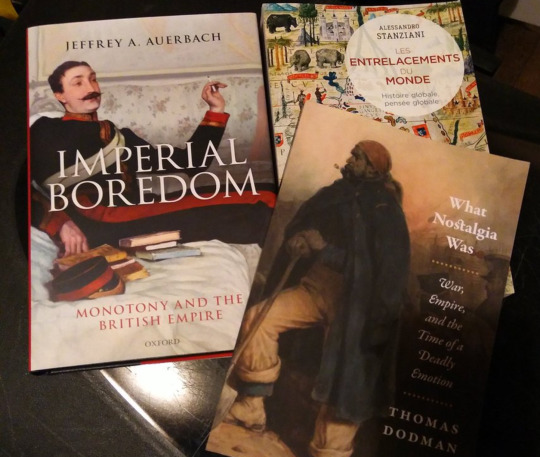
The British Empire has had a huge impact on the world in which we live. A brief look at an atlas from before World War One will show over hundred colonies that were then part of the Empire but now are part of or wholly sovereign states. Within these states much remains of the commercial, industrial, legal, political and cultural apparatus set up by the British. In many former colonial areas, political issues remain to be solved that had their genesis during the British era.
The legacy of the British has been varied and complex but in recent years much attention has been on making value judgements about whether the Empire was a good or bad thing. Of course the British Empire was built on the use of and the continual threat of state violence and there were appalling examples of the use of force. As well as the slave trade, there was the Amritsar Massacre in 1919, the 1831 Jamaican Christmas Uprising, the Boer War concentration camps (1899-1902) and the bloody response to the Indian Mutiny of 1857. However, we must not just focus on these events but examine the Empire in all of its complexities.
In the current moment of our times, it would seem that as a nation we are more concerned about beating ourselves up and making the nation feel guilty than understanding how and why the British came to exist, and setting the growth of the British Empire into historical context to be wise about the good, the bad, and the ugly. History has to be scrupulously honest if it’s not to fall prey to propaganda on either side of the extreme political spectrum.
Truth be told I find these questions about the British Empire being good or bad either boring or unhelpful. It doesn’t really bring us closer to the complexity and the reality of what the British Empire was and how it was really run and experienced by everyone.
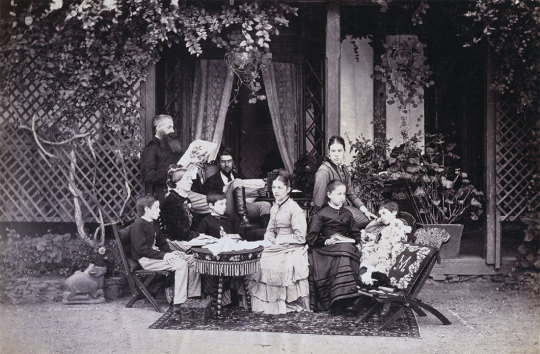
For myself personally the British Empire was part of the fabric of our family history. The Far East, the Middle East and Africa figured prominently and at the centre of which - the jewel in the crown so to speak - was India. In my wider family clan I’ve come to learn about - through handed down family tales, personal diaries, private papers, and photos etc - the diverse experiences of what certain eccentric characters got up to and they ranged from missionaries in India and Africa to military men strewn across the Empire, from titans of commerce in the Far East to tea farmers in East Africa, from senior colonial civil servants in Delhi to soldier-spies on the North West Frontier (now northern Pakistan).
My own experience of being raised in India, Pakistan as well as parts of the Far East was an adventure before being carted off to boarding school back in Britain and then fortunate in later life to be able to travel forth to these memorable childhood places because of the nature of my work. Having learned the local languages and respectful of customs I have always loved to travel and explore deeper into these profound non-Western cultures. Despite the shadow of the empire of the past I am always received with such down to earth kindness and we share a good laugh. So I always assumed that the British Empire played a central role in the life of Britain has it had in our family history just because it was there. But historians are more concerned with much more interesting questions that challenge our assumptions.


So when I was at university it was a great surprise to me to first read a fascinating history of the British Empire by Bernard Porter called ‘The Absent Minded Imperialists: Empire, Society and Culture in Britain’ (2004). Porter was, in his own words, “mainly a response to certain scholars (and some others) who, I felt, had hitherto simplified and exaggerated the impact of ‘imperialism’ on Britain in the nineteenth and twentieth centuries, after years in which, except by empire specialists like myself, it had been rather ignored and underplayed. […] the main argument of the book was this: that the ordinary Briton’s relationship to the Empire in the nineteenth and early twentieth centuries was complex and ambivalent, less soaked in or affected by imperialism than these other scholars claimed – to the extent that many English people, at any rate, possibly even a majority, were almost entirely ignorant of it for most of the nineteenth century.” It became a controversial book but a welcome one because it was well researched and no doubt made some imperial historians choke on their tea dipped biscuits (and that’s not even counting the historically illiterate post-colonial studies crowd in their English faculties who often got their knickers in a twist).
Years later I read another fascinating collection of scholarly chapters by different historians called ‘Anxieties, Fears, and Panic in Colonial Settings: Empires on the Verge of a Nervous Breakdown’ (2016) edited Harald Fischer-Tiné which challenged a rosy vision of Britain’s imperial past by tracing British imperial emotions: the feelings of fear, anxiety, and panic that gripped many Britons as they moved to foreign lands. To be fair both Robert Peckham’s Empires of Panic: Epidemics and Colonial Anxieties (2015) got there before him but Tiné’s history set the trend for others to follow such as Marc Condos’s The Insecurity State: Punjab and the Making of Colonial Power in British India (2018) and Kim Wagner’s Amritsar 1919: An Empire of Fear and the Making of a Massacre (2019).
They all set out their stall by highlighting the sense of vulnerability felt by the British in the colonies. Fisher-Tiné’s edited book in particular highlights the pervasiveness of feelings of fear, anxiety, and panic in many colonial sites. He acknowledges that: “the history of colonial empires has been shaped to a considerable extent by negative emotions such as anxiety, fear and embarrassment, as well as by the regular occurrence of panics.”
The book suggests that these excessive emotional states were triggered by three main causes. First, the European population in British India was heavily dependent on Indian servants and subordinates who might retaliate against unfair masters or whose access to European dwellings could be used by malevolent others to poison the white elite. Second, anxieties about the assumed toxic effects of the Indian climate fuelled also poisoning panics. Diseases such as malaria and cholera were considered to be the ultimate outcome of an “atmospheric poison”. Third, Indian therapeutics and the system of medicine were also identified as a potential cause of poisoning European communities. These poisoning panics only helped reinforce the racial categorisations of Indians, the moral supremacy of the white population, and the legitimacy of colonial rule. Overall the book expanded the understanding of how a sense of fragility rather than strength shaped colonial policies.
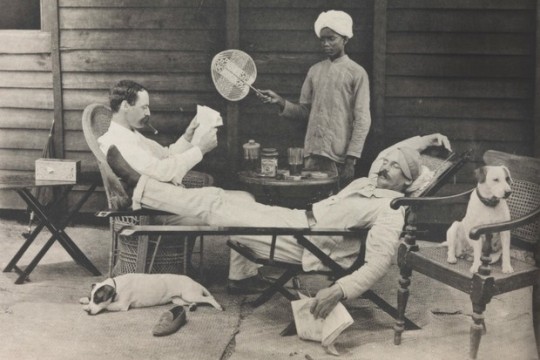
Now comes another noteworthy book which again sound a little quirky but is no less meticulous in its research and judicious in its observations. Many books about the British Empire focus on what happened; this book concentrates on how people felt. When I was first given it I was predisposed to be negative because here was a book about ‘feelings’ - the current disease of our decaying western culture. But I was pleasantly surprised.
Was the British Empire boring? So asks Jeffrey Auerbach in his irreverent tome, ‘Imperial Boredom: Monotony and the British Empire’ (2018).
It’s an unexpected question, largely because imperial culture was so conspicuously saturated with a sense of adventure. The exploits of explorers, soldiers and proconsuls – dramatised in Boys’ Own-style narratives – captured the imagination of contemporaries and coloured views of Empire for a long time after its end. Even latter-day historians committed to Marxist or postcolonial critiques of Empire tend to assume that the imperialists themselves mostly had a good time. Along with material opportunities for upward mobility, Empire offered what the Pan-Africanist W.E.B. DuBois called ‘the wages of whiteness’ – the psychological satisfactions of membership in a privileged caste – and an escape from the tedium of everyday life in a crowded, urbanised, ever less picturesque Britain.
The British Empire has been firmly tied to myth, adventure, and victory. For many Britons, “the empire was the mythic landscape of romance and adventure. It was that quarter of the globe that was coloured and included darkest Africa and the mysterious East.” Cultural artifacts such as music, films, cigarette cards, and fiction have long constructed and reflected this rosy vision of the empire as a place of adventure and excitement.
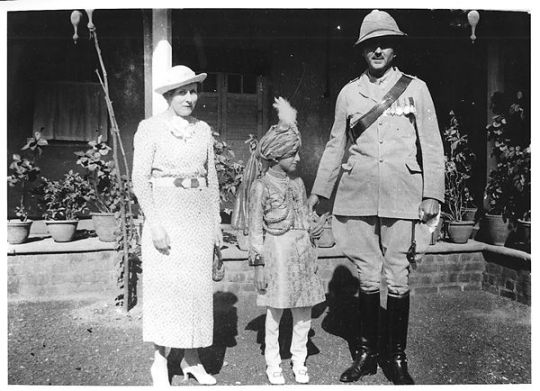
Against this widely held view of the empire, As Auerbach argues here, however, the idea of Empire-as-adventure-story is a misleading one. For contemporaries, the promise of exotic thrills in distant lands built up expectations which inevitably collided with reality.
In a well-researched and enjoyable book, the author argues “that despite the many and famous tales of glory and adventure, a significant and overlooked feature of the nineteenth-century British imperial experience was boredom and disappointment.” In other words, instead of focusing on the exploits of imperial luminaries such as Walter Raleigh, James Cook, Robert Clive, David Livingstone, Cecil Rhodes and others, Auerbach says pay attention to the moments when many travellers, colonial officers, governors, soldiers, and settlers who were gripped by an intense sense of boredom in India, Australia, and southern Africa.
For historians, the challenge is to look past the artifice of texts which conceal and compensate for long stretches of boredom to unravel the truth. Turning away from published memoirs and famous images, therefore, Auerbach trains his eye on the rough drafts of imperial culture: letters, diaries, drawings. He finds that Britons’ quests for novelty, variety and sensory delight in the embrace of 19th-century Empire very often ended in tears. Indeed Auerbach identifies an overwhelming emotion that filled the psyche of many Britons as they moved to new lands: imperial boredom.

Precision in language and terminology is essential and Auerbach begins by setting out what he means by boredom. Adopting Patricia Meyer Spacks’ approach, he points out that the term first came into use in the mid-18th century. Auerbach identifies then the feeling as a “modern construct” closely associated with the mid-18th century where the spread of industrial capitalism and the Enlightenment emphasis on individual rights and happiness that the concept came to the fore. This does not mean that nobody previously suffered from boredom, but that, with the Enlightenment’s emphasis on the individual, this was when the feeling first became conceptualised. Like Spacks, he distinguishes boredom from 19th-century ‘ennui’ or existential world-weariness and also from monotony, which has a much longer history. Whilst a monotonous activity or experience may generate a feeling of boredom, it will not necessarily do so. The two terms must, therefore, not be equated.
Significantly, in a footnote, Auerbach cites a passage from 19th Century English satirical novelist, Fanny Burney, in which an individual is described as ‘monotonous and tiresome’ but, as he emphasises, ‘not boring’. To prevent confusion, the term ‘boring’ is best avoided when describing an activity or experience because this is to beg the question as to whether it does in fact generate feelings of boredom in a particular person.
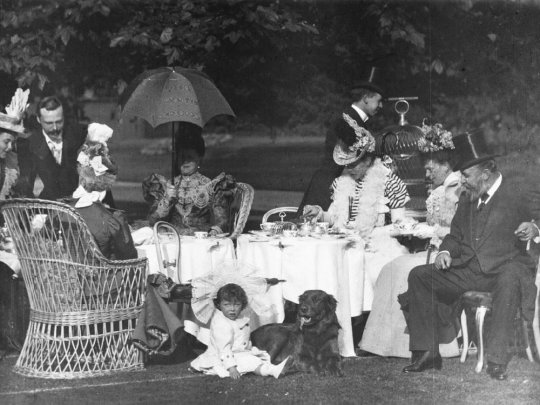
How then should this state of mind be assessed and what should be seen as the symptoms of imperial boredom? As Auerbach acknowledges, boredom ‘is not a simple emotion, but rather a complex constellation of reactions’. Building on that approach, he says ‘imperial boredom’ reflected ‘a sense of dissatisfaction and disenchantment with the immediate and the particular, and at times with the enterprise of empire more broadly’. If this tends to mix cause and effect, the idea of dissatisfaction and disenchantment essentially mirrors Spacks’ definition of the symptoms of boredom, namely, ‘the incapacity to engage fully: with people, with action, with one’s own ideas’. ‘Imperial boredom’, therefore, was more than a fleeting moment of irritation with a particular situation or person and reflected a mind-set that derived from, and in turn, further contributed to, a sense of disillusionment with the overall project.
It stemmed, so Auerbach argues, from the marked contrast between how empire was represented and how it turned out to be, between ‘the fantasy and the reality’. ‘Empire was constructed as a place of adventure, excitement and picturesque beauty’ but too often lacked these features. Nowhere is this better described than in George Orwell’s Burmese Days, in which the promising young John Flory has become ‘yellow, thin, drunken almost middle-aged’. Beginning with this illustration, Auerbach argues that historians have too often overlooked this essential aspect of empire and sets out to discover the extent to which it was characteristic of what Flory called the ‘Pox Britannica’ more generally.

During the 17th century the British Empire sustained itself on the story that the colonial experience was both righteous and unbelievably exciting. Sea voyages were difficult, and when one eventually did reach landfall there was a good chance of violence, but the exotic foreign cultures, the landscapes, and the wildlife made the trip worthwhile. The British colonialist was meant to be swashbuckling. Advertisements for even the most banal household goods offered colourful and robust propaganda for life in the colonies. Travelogues and illustrated accounts of colonial exploration were wildly lucrative for London publishing houses. All of this attracted a crowd of young Brits eager to escape the drudgery of life in the metropole.
By the 19th century, expectations were catching up. As Auerbach makes it clear, from the beginning, the sense of boredom experienced by many Britons in new colonial settings was much more profound during the nineteenth century. Indeed, the latter was marked by a series of bewildering social, cultural, and technological changes that stripped the empire of its sense of novelty. The development of new means of transport such as steamships, the rise of tourism, and the proliferation of guidebooks jeopardised the sense of risk, newness, enthusiasm that had long been associated with the British imperial experience. Consequently, while “the early empire may have been about wonder and marvel, the nineteenth century was far less exciting and satisfying project.
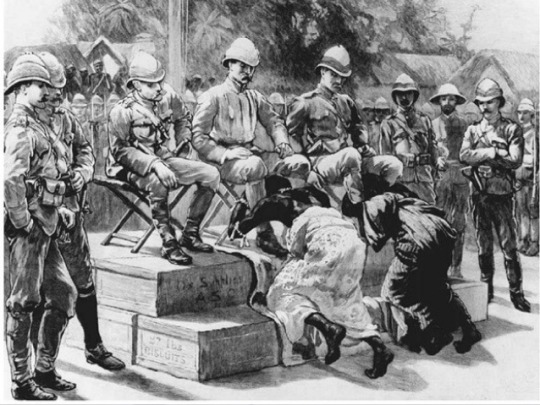
Auerbach spent 20 years gathering evidence spanning the late 18th century to the turn of the 20th, which records feelings of being bored, miserable and deflated. It’s a captivating history of imperial tedium drawn from memoirs, diaries, private letters and official correspondence. In “reading against the grain”, as Auerbach puts it, he has focused on recorded events normally skimmed over by historians, precisely for being boring – multiple entries repeated over and over again about the weather, train times, shipping forecasts, deliveries, lists and marching; or about nothing ever happening.
In five thematic chapters, “Voyages”, Landscapes,” Governors,” Soldiers”, and “Settlers,” Auerbach shines new light on the experience of traversing, viewing, governing, defending and settling the empire from the mid-eighteenth century to the early twentieth century. The monotonous nature of the sea voyage, dreary and uninteresting imperial lands, daily routine, depressingly dull dispatches, mind-numbing meetings are some of the sources of an utter sense of imperial boredom.
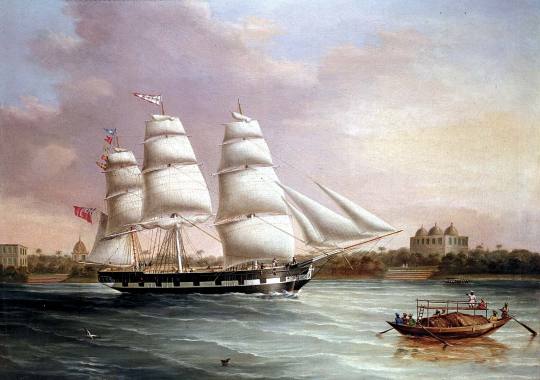
Whilst the first chapter, Voyages, may be the logical starting-point, it presents particular problems. They may have been monotonous, but it is unlikely that they would have engendered feelings of disenchantment and disillusion at the outset of an empire life or career. Auerbach begins with the somewhat surprising assertion that ‘not until the first half of the 19th century did long-distance ocean travel become truly monotonous’, arguing that this was because, until then, the weather had been ‘a source of danger and discomfort’ whereas, by the mid-19th century, ‘it was barely worth mentioning’. Leaving aside the obvious difficulties with that approach – many 19th-century travellers, assuming they survived, described enduring terrifying typhoons in the Indian Ocean and South China Sea – voyages certainly could be monotonous, particularly, when steam replaced sail.
However, his assertion that this ‘helped to produce feelings of boredom that had never been felt before’ is more questionable. For example, whilst Sir Edmund Fremantle (1836–1929) wrote in his memoirs that, although the sea passages were ‘monotonous’, ‘it never occurred to [him] to be bored’, Auerbach suggests that, ‘in several places his memories [sic] belie his claims’, in that they refer to the ‘the monotony’ of various experiences, including cruising out of harbour under steam rather than under sail, which ‘always possessed some interest’. But, this not only contradicts what Fremantle wrote but also equates boredom with monotony and, thus, deprives it of any proper meaning.

Similarly, because the Royal Naval Surgeon, Edward Cree (1814–1901) recorded his passing the time ‘reading, drawing, walking on deck, eating drinking and sleeping’, Auerbach concludes that ‘almost every leg of his 1839 journey to the East was boring or disappointing’. However, he omits the opening words of this journal entry which reads, ‘making but slow progress towards China. Weather intolerably hot … The time passes pleasantly enough on board’, which suggests he was certainly not bored. Much of this chapter is not concerned with monotony but with how ‘dreadful’ sea voyages could be, particularly, for travellers to Australia, most of all transported convicts, who, as he shows, had to endure the most brutal conditions. But they had no expectations of empire and this seems to add little to the understanding of imperial boredom.
It may well be that, because voyages were so unpleasant, travellers became all the more expectant and thus disappointed, when, on arriving, they found, as Auerbach argues in the next chapter, that much of the landscape was dreary and uninteresting. Moreover, many could not decide whether they were in search of a landscape that was picturesque and exotic or ‘normalised’ by reproducing English architecture, gardens and surroundings. This dichotomy generated further disenchantment.
If Auerbach dwells too long on obscure painters who often had little success in making these imperial landscapes picturesque, there is no doubt that many of them were monotonous, not least the vast tracts of Australian out- back. Consequently, whilst ‘the early empire may have been about wonder and marvel, the 19th century was a far less exciting and satisfying project’ and this contributed to feelings of boredom.
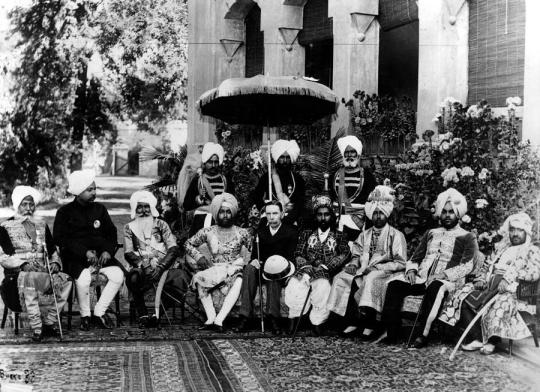
In the chapter, ‘Governors’, Auerbach essentially covers the administration of the empire. Here, there was also a lot of monotony, although Auerbach wavers between whether this was caused by having too much or too little work to do. Either way, it leads to the assertion that ‘throughout the nineteenth century and into the twentieth, British imperial administrators at all levels were bored by their experience, serving king or queen and country’. However, this is qualified in the next paragraph, in which he cites the Marquess of Hastings, who served in India in the early 1800s, and Lord Curzon, who served as Viceroy at the end of the century, neither of whom, he says, suffered from boredom. It was ‘during the middle decades, that imperial service was far less stimulating’ but he does not explain why it should have been limited to this particular phase.
Indeed, in terms of the staggering quantity of paper generated by the ICS, the problem stretched back to the early 18th century. Records were copied and recopied, and months were spent waiting on instruction from London. The few encounters with colonised subjects came in the form of long, drawn-out formal events. Lord Lytton as Viceroy of India between 1876-1880 was required to bow 1230 times during one particularly ceremonial reception with the Viceroy.
Whilst it is ultimately fruitless to exchange examples of officials who did and did not find government service boring, some of those chosen by Auerbach are not convincing. James Pope Hennessy, for example, the eccentric Irishman who delighted in antagonising the colonials and endearing himself to the indigenous people with his unconventional views on racial equality, certainly found the European life-style monotonous but, as a result, made sure he kept ceaselessly active. In the words of his biographer, ‘the chief impression [he] made on British and Orientals alike was one of superlative vitality. “He would do better”, wrote Sir Harry Parkes “if he had less life”’, Coming from Parkes, that arch- imperialist, who allegedly died from over-work and could never have been bored, the comment is telling.
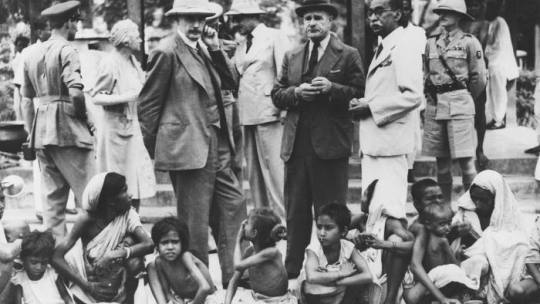
While idleness certainly contributed to boredom, it was often the labour of maintaining colonial control that proved to be the most dull. Increasingly professionalised, the management of the colonies became characterised by strict report-making, bookkeeping and low-stakes decision-making related to staff. Whilst these officials may have become disenchanted, it is unclear what sort of mind-set they had when they started out: according to Auerbach, ‘they may well have entered imperial service out of a sense of duty, or perhaps looking forward to a colonial sinecure that offered status and adventure as well as a generous salary, but instead found themselves inundated by a volume of paperwork and official obligations that they had never anticipated, and which they found to be, quite frankly boring’. As a result, they were ‘eager to escape the tedium of the empire they had built’.
Whilst this suggests that, as a result, they threw up their empire careers, the example of Sir Frank Swettenham does not seem to fit the picture. He may have found life from time to time ‘extraordinarily dull’, but he continued as a government official in the Malay States for thirty years, before retiring in 1901. His belief in the imperial cause seems to have overcome the dullness and trumped any possible disenchantment.

In the chapter entitled, Soldiers, Auerbach concedes that ‘the link between military service and boredom can be traced at least to the mid-eighteenth century’. However, he argues, what was different in the 19th century was that boredom was no longer simply ‘incidental or ‘peripheral;’ it was ‘omnipresent’ and this was ‘a function of unmet expectations’, namely, the unsatisfied thirst for action and bloody combat as the ‘small wars’ of the Victorian age became shorter and fewer. However, citing Maeland and Brunstad’s Enduring Military Boredom, he concedes that this omnipresent boredom is a ‘condition that persists to the present day, especially among enlisted men’. This, therefore, divests it of any imperial character and suggests that it was, and remains a feature of modern military service.
Nonetheless, it would have been interesting to know how this boredom affected the performance of the military in the context of empire. Certainly, it gave rise to some of its more unsavoury aspects, with drunken soldiers brawling and beating up the locals and spending much of their time in the local brothels.
According to Richard Holmes, by 1899, there was ‘a real crisis’ in the infection rates of venereal disease of British soldiers in the Indian Army: ‘for every genteel bungalow on the cantonment … there were a dozen young men, denizens of a wholly different world, crossing the cultural divide every night’. Here was imperial boredom in the raw and urgent measures had to be taken to abate its consequences.
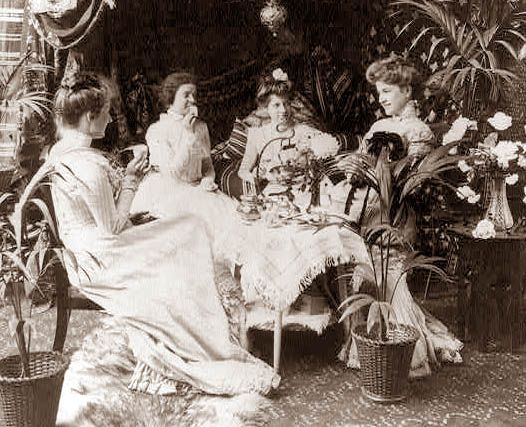
Although the final chapter is entitled ‘Settlers’, it encompasses a much broader category of imperial agents, including women, who until this point have been little- mentioned, and, in particular, women in India ‘most of whom went there in their early twenties to work (or to accompany their husbands who were working) and then typically left by the time they reached their fifties to retire in Britain’. It is unclear why these women and, indeed the whole topic of women in empire, should be subsumed under this chapter heading, given their importance in the empire project and the attention given to them in post-colonial scholarship.
In recent scholarship, empire white women have been frequently misrepresented and lampooned in the literature, including the novels of E. M. Forster, George Orwell, and Paul Scott and all too often reincarnated as representing the worst side of the ruling group – its racism, petty snobbishness and pervading aura of superiority and shown as shallow, self-centred and pre-occupied with maintaining the hierarchy of their narrow social worlds. They have invariably been portrayed as both bored and boring.
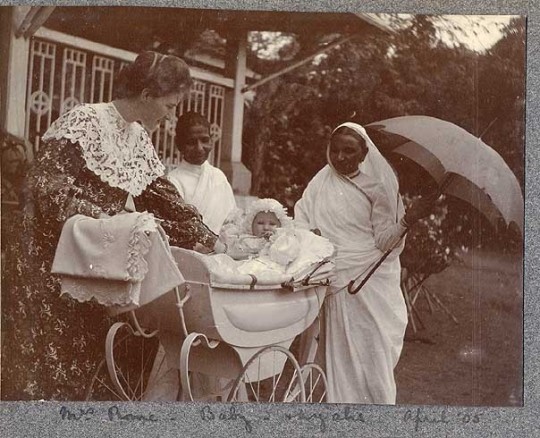
The wives of these officials were encouraged to run their households in a similar way, managing a large domestic staff and keeping a meticulous watch on financial expenditures. Socially, they were faced with constant garden parties and dinners with whatever small group of colonial families lived nearby. It’s difficult to imagine just how dull the existence of these administrators must have been, yet in reading these colonial accounts, the temporality and the totalising effects of boredom feel undeniably similar to the way that we describe the monotony of work today.
Auerbach effectively reiterates the trope as a clichéd illustration of a female, reclining aimlessly on a chaise longue, conjuring up the familiar image of ‘the same women [who] met day after day to eat the same meals and exchange the same banal pleasantries’ and concluding that ‘it was not only in India that women were bored, which suggests that the phenomenon was not a localised one, but a broader imperial one’.
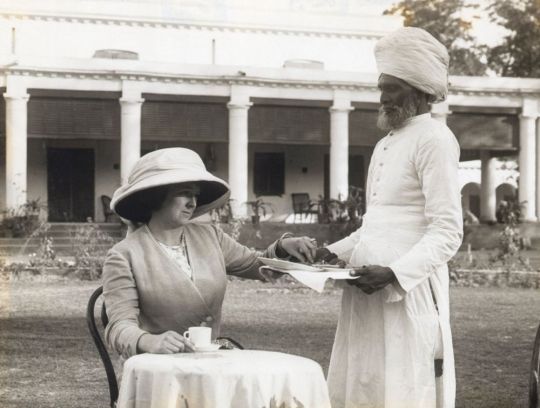
Of course many western women did find life in empire monotonous and suffered from boredom, if not depression, and no doubt many were insufferable, as were their husbands, but there is an alternative image and the analysis is so generalised that their contribution is, once again, in danger of being dismissed out of hand.
A more nuanced approach would have examined ways in which women overcame their boredom by pursuing activities in which they were anything but bored, including, most obviously, the missions, a category which, despite its importance, does not feature, save for one cursory comment to the effect that, ‘even missionary women, whose sense of purpose presumably kept them inspired, could find themselves bored’. The example given is that of Elizabeth Lees Price, who, at one point during her eventful life, had to help run three schools for 30,000 pupils. But, just because her diary recorded ‘with increasing frequency’ the comment ‘nothing has happened’, it seems a stretch to infer, as Auerbach does, that ‘not even missionary work was enough to stave off the boredom that afflicted women all across the empire’.
For Auerbach, recuperating boredom means reframing the experience of empire as one of failure and disappointment. In the context of colonial scholarship, which tends to focus on the violence of colonialism and the myth-making that went along with it, Auerbach’s book is rather counter-intuitive. He drains the power of these myths, looking instead at the accounts of those responsible for building empire from the ground up: “What if they were not heroes or villains, builders or destroyers,” he writes, “but merely unexceptional men and women, young and old, rich and poor, struggling, often without success, to find happiness and economic security in an increasingly alienating world?” The agents of colonialism struggled to find any semblance of agency in the work that they were doing. Imperial time stretched out, deadened over decades of appointment in far off islands and desert outposts: a sort of watered down version of Hannah Arendt’s “banality of evil” in paradise.

Whilst Auerbach demonstrates that much of empire life was monotonous, to my mind, he is too quick to infer that this monotony necessarily gave rise to feelings of ‘imperial boredom’, properly so-called. He also too easily assumes that, where people were bored, this could only operate in a negative way and, whilst he may be right in concluding that, ultimately, ‘the British were, quite simply bored by their empire’, he fails to draw the evidence together to explore what impact imperial boredom had on the development of empire, for better or worse, during the long 19th century.
If not quite an invention of the 19th century, boredom was a particular preoccupation of the period: the product of new assumptions about the separation of work and leisure and a prominent theme of fin-de-siècle literature. Less clear is whether Auerbach is right to treat boredom separately from other emotional states – anxiety, loneliness, anger, fear – which afflicted the imperialist psyche. After all, a long literary tradition – from Conrad to Maugham, Orwell, Lessing and Greene – describes precisely how those varied shades of neurosis blended into one another.
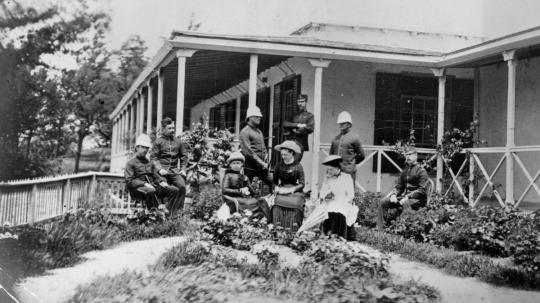
Besides, a more capacious history of discontent and Empire might help to connect the frustrations of the imperialist experience to the suffering of imperial subjects. When, for instance, did boredom turn to aggression and violence? One danger of Auerbach’s approach in Imperial Boredom is to portray an enervated and under-stimulated, yet still extraordinarily powerful, elite as more or less passive.
As imperial rivalry intensified towards the end of the century, so did the quest for new ways of staving off boredom, not only for men in the British Empire but also for those in the other European empires, and war was one of the most obvious solutions.
As other imperial historians have argued, what Europeans were seeking was everything the nineteenth century, in its drawn-out tedium, had denied them. War as Cambridge historian Christopher Clark has argued, “was going to empower them and restore a sense of agency to their limbs and lives.” Auerbach refers to what Clark called ‘the pleasure culture of war’, citing the example of Adrian de Wiart who, serving in the Boer War, knew ‘once and for all, that war was in my blood. I was determined to fight and I didn’t mind who or what’. But he does not explore the consequences of this mood further, other than to say that these adventurers also ‘ended up bored … and disillusioned’. But, the implications were, arguably, much more far-reaching.
Even if it was not directly causative, this mood was ‘permissive’ of the more direct causes and certainly formed part of the background against which Europe went to war in 1914. It may be thought that it did so in a fit of imperial boredom.
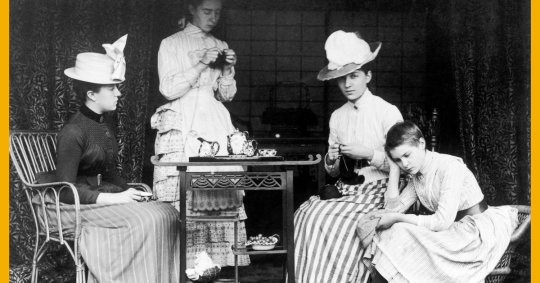
I admire the audacity of Auerbach’s writing and as a revisionist piece of history it has the dash and dare of British imperialism and colonialism. But after reading the book I came away thinking that sweeping statements such as that the empire developed “in a fit of boredom” are a tad unconvincing.
Although he spent about 20 years collecting materials, Auerbach seems not to have visited Africa or India during his research. Had he done so, I doubt if he would all too easily accepted that colonial accounts of being bored represented the full experience. Absent are deeper discussions of how expressions of being bored are linked to racism, arrogance and the need to assert power in exotic, challenging and unstable environments. Emotional detachment, disdain and a demand to be entertained were also part of a well-rehearsed repertoire of domination.
But where Auerbach does succeed is in admirably capturing the texture of everyday imperialist life as few historians have. Most of these examples are compellingly relevant and illustrative of some of the colonial circumstances that drove Britons mad with boredom, challenging one of the enduring myths about the British Empire as a site of exciting adventure.
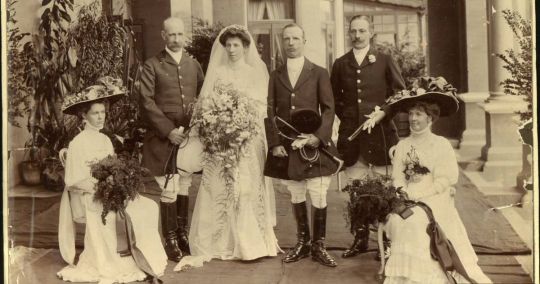
If you are a lover of histories of white imperial rulers and thumbnail portraits, this book is for you. It’s full of excellent quotes. Lord Lytton, for example, fourth choice to be governor-general of India in 1875 (and appalled by the prospect), later summed up the British Raj as “a despotism of office-boxes tempered by the occasional loss of keys”. It was certainly the case that propaganda about empire and the populist books written about it to make money created false expectations, leading to bitter disillusionment. Nostalgists for the age of pith helmets and pukka sahibs will find little comfort here.
In mining the gap between public bombast and private disillusionment, Auerbach demonstrates that – even for its most privileged beneficiaries – Empire was almost never a place where fantasy became reality. I would suggest that rather than the British Empire being mostly boring, more accurate would be David Livingstone’s verdict on exploratory travel while battling dysentery: “it’s not all fun you know.”
The concept of imperial boredom provides a novel and illuminating lens through which to examine the mind-set of men and women working and living in empire, how it was that, despite the crushing monotony, so many persisted in the endeavour and what this tells us about the empire project more generally. There are all states of mind familiar to historians of empire (in the lives of their subjects, of course). It has long been argued that strategies to relieve moments of white boredom in the empire included cheating and adultery, husband hunting, trophy wife hunting, massive consumption of alcohol, gambling, copious diary and letter writing, taxidermy, berating the servants, prostitution, bird-watching, game hunting, high tea on the verandah, fine pearls and ball gowns, all were par for course in the every day lives for those bored British colonisers.

Auerbach’s book reminds me of a not so nice female character bemoans James Fox’s scandalous but true to life colonial novel White Mischief (1982), as she looked out over the Rift Valley in 1940s colonial Kenya, she declares, “Oh God! Not another fucking beautiful day.”
An earnest post-colonialist studies reader might might feel triggered by such a flippant remark as evidence of all that was wrong with the imperial project but at heart it’s a pitiful lament disguised as boredom at the gilded cage the British built for themselves to capture the enchantment and disenchantment of every day life in the British Empire.
#treat your s(h)elf#books#book review#bookgasm#reading#imperialism#british empire#boredom#british#history#colonialism#imperial boredom#jeffrey auerbach#empire#personal#bio#childhood
54 notes
·
View notes
Text
Akshay Kumar Net Worth, Age, Wiki, Photos, Awards & Controversy Today
This article covers information about Akshay Kumar current net worth as well as last 5 years net worth, personal details, photos, controversy, awards, lesser known facts, FAQ’s and everything you want to know about him.

Akshay Kumar Biography & Personal Details
Akshay Kumar is a famous name in Bollywood industry. The fit actor Akshay Kumar is one of the best actor in Bollywood. There are millions of fans and followers of Akshay Kumar in the world and followers always want to get maximum information about their favourite Actor.
Name: Akshay Kumar
Profession: Actor, Director, Producer
Date of Birth: 9 September 1967
Birth Place: Amritsar — Punjab, India
Age As of 2022: 54
Net Worth in Dollars: $325 Million
Short Bio: Akshay Kumar is an Indian actor and producer who has appeared in Hindi movies. He has studied martial arts in Bangkok. His original name was Rajiv Bhatia. Akshay was born tin Amritsar and his father name is Hari Om Bhatia and Mother name is Aruna Bhatia. Akshay’s father was a military officer and Akshay is married to Twinkle Khanna, daughter of Superstar Rajesh Khanna and Dimple Kapadia.
Affairs/Girlfriends: Pooja Batra, Ayesha Jhulka, Raveena Tandon
Wife/Spouse: Twinkle Khanna
Debut: Yeh Dillagi, Mohra, Dil To Pagal Hai
Religion: Hindu
Residence: Mumbai, Maharashtra, India
Education Qualification: College Dropout
Social Media Links: Facebook | Instagram
Akshay Kumar in Spotlight

Akshay Kumar Net Worth
Akshay Kumar is known for his acting ability and his versatility. He is a very compatible and energetic actor, who has a capacity to make any role his own. Akshay Kumar might be the undeniable actor of Bollywood but his income comes from many different sources such as Movies, shows, endorsements and business investments. Akshay Kumar‘s Net worth is $325 Million in 2022 which in Indian Currency is 2050 Crore Indian Rupee and Akshay Kumar‘s monthly salary is around 4 Crore + in Indian rupees.

Akshay Kumar Net Worth in Last 5 Years

Akshay Kumar’s Controversies
Back in March 2008, Akshay was on a runway displaying a denim brand to show the new launch of denim. Everything was going fine but then he walked up to his wife while being under the spotlight. Akshay’s wife Twinkle Khanna unzipped his pants.
The actor has always had to hear some trolls because of Canadian citizenship. In 2019 he didn’t vote for the Lok Sabha election and that’s when people started trolling him even more for being a Canadian and having a passport of the same.
Rustom, the film, of course, brought tears and made people feel a rush of emotions all at once. The uniform he wore there was auctioned and he announced the amount will be used for animal welfare. Then people took offense in that too! Saying he was tagging costume as a real uniform. After that happened he explained that the whole thing was planned for a good cause.
Uncover The Lesser Known Facts About The Akshay Kumar
Reportedly, Imran Khan`s character of a sassy womanizer in I Hate Luv Story has been inspired by Akshay Kumar.
2.0 (2018) marked Akshay Kumar’s debut in Tamil cinema.
Akshay Kumar worked as a chef and waiter in Bangkok before becoming a superstar.
Akshay Kumar was also a martial art teacher and it was during one of the martial art classes that one of his students suggested that he try modelling.
Akshay Kumar has named his daughter Nitara Rajesh Khanna to honour his late father-in-law Rajesh Khanna.
Akshay Kumar’s original name is Rajeev Bhatia. He decided to stick to the name Akshay post his role in the film Aag.
Although he made his debut in 1987, Akshay Kumar’s first award was the Best Villain Award for the movie Ajnabee (2001).
Akshay Kumar is known for his disciplined life. He reportedly wakes up at 5 am in the morning, everyday.
Akshay Kumar launched his production house Grazing Goats to support low budget films.
Akshay Kumar keeps his body fit through running, martial arts and kickboxing. He avoids weightlifting completely.
Akshay Kumar is a black belt in Taekwondo and specialises in Muay Thai, a combat sport popular in Thailand.
Akshay Kumar worked as an assistant to ace photographer Jayesh Seth to earn enough money for his portfolio shoot.
Akshay Kumar is known for doing most of his film stunts without any body double.
After 30 years of being in the industry, Akshay Kumar was honored with his first National Film Award for Best Actor for his performance in the movie Rustom.
Akshay Kumar was the initial choice to play Salman Khan’s brother in Tubelight. However, Kabir Khan decided against it and cast Sohail Khan since he thought that it would be easier for the real-life brothers to create that kind of camaraderie on screen.
Akshay Kumar was keen on playing the role of M. S. Dhoni but was turned down by director Neeraj Pandey since he wanted to cast someone who looked similar to Dhoni.
There are several references in Jolly LLB 2 to its predecessor. In the courtroom scene where Akshay Kumar’s character introduces himself as Jolly, the judge (played by Saurabh Shukla) quips whether he has a brother living in Delhi. This is a direct reference to Arshad Warsi’s character from Jolly LLB (2013).
Akshay Kumar had auditioned for Deepak Tijori’s role in the Jo Jeeta Wohi Sikander (1992), but he was rejected.
Akshay Kumar’s Upcoming MoviesFaq’s
Who is Akshay Kumar why he is popular?
Akshay Kumar is one of the biggest and most popular actors in Bollywood, having appeared in 112 movies with more productions on the way. The award-winning actor is an accomplished stuntman, producer, and philanthropist, with endorsements and business investments all over the world.
Who is Akshay Kumar dating?
Akshay Kumar is currently married to Twinkle Khanna. The couple started dating in 2001 and have been together for around 21 years, and 7 days.
What is the net worth of Akshay Kumar?
Akshay Kumar net worth is in dollars is $325
Is there any controversy associated with Akshay Kumar?
The actor has always had to hear some trolls because of Canadian citizenship. In 2019 he didn’t vote for the Lok Sabha election and that’s when people started trolling him even more for being a Canadian and having a passport of the same.
Source: https://www.decadeslife.com/akshay-kumar/
0 notes
Text
At XL Multimedia, we understand that simply possessing technical skills and proficiencies is not enough in today's fast-paced world. That's why we offer real-time industry projects to give students hands-on experience and help them gain the practical skills needed to succeed in the real world.International Diploma Courses in Graphic Designing, Digital Marketing, Video Editing and Compositing , VFX, 3D Animation, Film Making, Camera Handling and Cinematography techniques, Website Designing and Website Development that will prepare you for a job worldwide, and you will be able to start earning between 15 to 25,000 in Amritsar, Here you will find professional experts who will assist you in becoming an expert in industrial tools and growup in your line in Amritsar. In addition, monthly contests will be organized to help candidates improve their abilities and get an assessment.
XL Multimedia Amritsar is a leading institution that offers comprehensive courses to individuals who want to learn creative and technical skills. With courses tailored to suit the needs of beginners and professionals alike, our experienced mentors will guide you through the learning process to ensure you achieve your desired goals.
Our courses cover a wide range of disciplines, including 3D animation, game design, architecture design, film making, editing and compositing, graphic designing, camera handling, cinematography techniques, web designing and development, digital marketing, and social media marketing. Each course is designed to be practical and hands-on, allowing you to apply the knowledge and skills you learn in real-world scenarios.
If you're interested in learning more about our courses, don't hesitate to contact our operator at +91-9781933000. We offer courses in graphic designing, digital marketing, website designing, camera training and handling, film making, acting, cinematography, architecture, videography, photography, game designing, video editing, and VFX. Our courses are designed to equip you with the skills and knowledge you need to succeed in your chosen field, whether you're pursuing a hobby or a career.
Join our one-year lateral entry program and become a part of Asia's No. 1 Multimedia and Animation Institute. Our courses are UGC approved, and we offer pathway programs for Australia, Canada, UK, and the USA. Get job-ready in just 180 days and learn from our award-winning students' work. You can even earn while studying and work globally after completing our courses.
We offer free career counseling sessions and provide details about our one-year lateral entry program and how you can get a job ready in 180 days. We'll show you how our XL Multimedia students are getting high salary jobs of 2 to 5 Lacs in short-term courses. Learn about the opportunities available in the industry in the global market and which career path is best for you in the future. We'll also provide details about our placement record and showcase our award-winning students' work.
Limited seats are available, so book now and get job-ready in just 180 days. Call us at 99144-88881 or 97819-33000 to register for a free demo session. You can also visit our website, Facebook, Twitter, Instagram, or YouTube pages for more information. Build the career of your dreams with XL Multimedia & Animation Institute.
#Graphic Designing Course In Amritsar#Graphic Designing Institute#Best Graphic Designing Academy#Graphic Designing Academy#Digital Marketing Course In Amritsar#Digital Marketing Institute#Best Digital Marketing Academy#Digital Marketing Academy#Website Designing Course In Amritsar#Website Designing Institute#Best Website Designing Academy#Website Designing Academy#Camera Training And Handling Course In Amritsar#Camera Training And Handling Institute#Best Camera Training And Handling Academy#Camera Training And Handling Academy#Film Making Course In Amritsar#Film Making Institute#Best Film Making Academy#Film Making Academy#Acting Course In Amritsar#Acting Institute#Best Acting Academy#Acting Academy#Cinematography Course In Amritsar#Cinematography Institute#Best Cinematography Academy#Cinematography Academy#Architecture Course In Amritsar#Architecture Institute
1 note
·
View note
Text

It is always a difficult task to choose what you want to do after high school. There are many opinions and suggestions that you get from others for your career. It is a phase of life we all go through. And to add more to this situation, we have numerous colleges and courses in our country.
Nowadays, students are driven more towards media careers. There are many colleges and multiple courses, which opens the doors to various exciting jobs. One of such courses is BA in mass communication, which is an undergraduate program.
Let us discuss in detail, to let you know about the course, the eligibility, and the job opportunities that you can avail yourself of after the completion of the program.
More about BA in mass communication
Bachelor of Arts mass communication is a three-year course where the students learn in detail about mass communication. The topics like films, radio, newspaper, broadcast, etc. are covered in various subjects of BA in mass communication. The course makes the students familiar with the theoretical and practical knowledge of mass communication.
Before applying to the course in any college or university, the student must be qualified to meet all the eligibility criteria. We shall see the basic eligibility criteria that are mandatory before admission.
Completion of 12th standard from a recognized board or university
A minimum of 50% marks in the 12th standard
Any stream students can apply for the course
A sneak peek of BA in mass communication colleges
India has some great universities, where every year thousands of students pass out and find their dream jobs. Education is vital, so is the institution.
There are many top colleges in India offering the BA in mass communication like Symbiosis Center for Media and Communication (SCMC) Pune, Khalsa College Amritsar, SIES college of arts, science, and commerce Mumbai, St. Andrews college of arts, science, and commerce Mumbai, Amity University Lucknow, GEMS arts and science college Kerala, Don Bosco College Goa, etc.
Being part of the top college allows you to have the best faculty, the best college experience, and the most important, placements.
Job opportunities with BA in mass communication
After every hustle, all we need is a good and rewarding career. The hard work is all for a well-settled and smooth life. BA in mass communication offers the students a rewarding career. After completing this course, the students can opt as a writer, Broadcaster, Public Relations, Screenwriter, Anchor, Video Jockey, Photographer, Radio Jockey, and many more.
All these opportunities can be availed from top BA in mass communication college. As they offer the best placements with the best firms. Grab yourself a seat and get ready for the exciting career options coming your way.
0 notes
Text
Bride & Prejudice (USA, 2004)

Predictions: Well, this is clearly yet another adaptation of Pride and Prejudice. With Indian Bennets, it would seem, based on the poster.
Plot: AND IT'S A MUSICAL!!!!
Well, here we are with the Indian Bennets… ACTUALLY INDIAN, BY THE WAY; this movie does not take place in England like we would have expected. The Indian Bennets live in Amritsar, India, which they talk about like it's a tiny podunk village, but a) there sure seem to be a lot of people there, and b) a quick Google tells us it's actually kind of a major city for its area???? Weird. Anyway, there's a wedding going on, and some exciting new gentlemen are visiting, and...well, it's pretty much Pride and Prejudice from there, but in India, except uncomfortably the two rich bachelors are the only people not from India. Bingley is Sayid from LOST, visiting from London, and Darcy, his friend, is weirdly...American?? (WHY???? Why did he even have to be white, honestly?) P.S. Alexis Bledel is his sister, we later learn.
Ummmm. Not that much to say about the plot, but let's talk about Indian Lizzie a bit. First of all, she's rather more romantic and glammed-up than we expect of a Lizzie. Second of all, she is literally played by one of the most beautiful women in the world. LITERALLY A MISS WORLD, YOU GUYS. MANY TIMES HAS THIS PARTICULAR WOMAN BEEN DESCRIBED AS THE "MOST BEAUTIFUL WOMAN IN THE WORLD." IN THE WORLD!!!! Now, Pride and Prejudice adaptations frequently struggle, we know, with not making Lizzie too pretty, but this particular casting choice is just… How can poor Indian Jane, who is perfectly reasonable in her prettiness, be expected to compete with Aishwarya Rai Bennet???? So beautiful! So charming!
Way more charming than American Darcy, by the way, who is deeply only okay and keeps saying unfortunate things. Maybe Darcy has to be British, guys. His personality is just too douchey when not offset by his Britishness.
So much large-group dancing!!!! which of course we love, like all Asian people. More musical numbers than we expected, since we didn't know it was a musical until they started singing the first major song. Bad lyrics, but otherwise fun. Loads of location-hopping -- India, London, LA… (Oh, right, we forgot, Wickham was also white. Which was fine. He was terrible.)
Best Scene: The first big dance number, led by Sayid Bingley, is pretty fabulous. Sayid Bingley, overall, is pretty charming, what else is new.
Worst Scene: Maybe when they’re all at dinner, and Mrs. Indian Bennet is being indiscreet in front of everyone about how she wants her daughters, especially the prettiest one (Jane), to marry rich. It is just so awkward.
Best Line: "To look at me for his bride; what do you think??" -- Mrs. Indian Bennet, sarcastically, when Aishwarya Rai Bennet asks why Indian Collins is coming to dinner.
Worst Line: Well, none of the lyrics to any of the songs were very good. Also, American Darcy said a couple of culturally tasteless things early on, but, happily, Aishwarya Rai Bennet called him on them immediately.
Highlights of the Watching Experience: Is every Indian dad played by Anupam Kher????
How Many POC in the Film: Everyone! Except American Darcy, Alexis Bledel Darcy, and Wickham. Oh, and Mama American Darcy, who sucked, by the way. There were loads and loads of Indian people, of course. Also some black people, but exclusively as musical performers: Ashanti at a party in India, and also an entire gospel choir on Venice Beach. Cool cool. Cool cool.
Alternate Scenes: Well, at one point American Darcy abruptly had a girlfriend that we previously had known nothing about, and then they just kind of didn't explain how that was cool?? Since he had been gallivanting about town with Aishwarya Rai Bennet???? So maybe the version of this movie where he either hadn't been gallivanting or didn't have a girlfriend, or even just a version where this was explained in a brief and poignant scene.
Was the Poster Better or Worse than the Film: Probably worse? The poster is fine, although it has a hilariously bad tagline and a tinge of an odd magical-realism vibe, but the movie was fun! A bit weird at times, but mostly, quite fun!
Score: 6.5 out of 10 Most Beautiful Smooches In The World. This movie wasn't necessarily that inspired in and of itself -- such bad lyrics, plus American Darcy HARDLY DESERVES Aishwarya Rai Bennet -- but we do love a good musical/giant synchronized dance number/Pride and Prejudice adaptation, and that's...what this was. Would watch again, but might feel slightly ashamed recommending.
Ranking: 22, out of the 90 movies we’ve seen so far. How nice to have not hated this movie, since it starred so many people of color.
34 notes
·
View notes
Video
instagram
PENDU Daddy..... Film Making Course and Tips and launch Models (at Amritsar, Punjab) https://www.instagram.com/p/B_9X0uvn5PL/?igshid=y0ydr5o51u4r
0 notes
Text
Deepika Padukone And Ranveer Singh Steal The Limelight With A Kiss On The Premier Of ‘Chhapaak’
New Post has been published on http://healingawerness.com/getting-healthy/getting-healthy-women/deepika-padukone-and-ranveer-singh-steal-the-limelight-with-a-kiss-on-the-premier-of-chhapaak/
Deepika Padukone And Ranveer Singh Steal The Limelight With A Kiss On The Premier Of ‘Chhapaak’
Deepika Padukone And Ranveer Singh Steal The Limelight With A Kiss On The Premier Of ‘Chhapaak’ Niharika Nayak Hyderabd040-395603080 January 9, 2020
The past two years have been a pretty crazy time for Deepika Padukone. Not only did she get married, but her movie Padmaavat even won her a Filmfare nomination for Best Actress. While her career has been on a steady rise, a lot of her fans are also happy that the actress finally got the happily-ever-after she deserved. Deepika and her longtime boyfriend, actor Ranveer Singh tied the knot in a lavish ceremony in late 2018. The actress has lately been doing media rounds, promoting her new film, Chhapaak. And this time, Deepika and her beau Ranveer proved that they are one of the cheesiest couples (evident on Instagram) in B-town with a kiss at the premiere of the movie. Read on to know more.
The Premiere
sabyasachiofficial / Instagram
The people behind Chhapaak hosted a special screening of the film in Mumbai on the 8th of January. The premier was attended by a multitude of celebrities from veteran actress, Rekha to Javed Akhtar, Swara Bhaskar and many other prominent names. Deepika’s father, badminton champ, Prakash Padukone, her mother Ujjala and younger sister, professional golfer Anisha were also in attendance. Deepika arrived at the premiere in an exquisite royal blue Sabyasachi saree with her supportive hubby Ranveer Singh in tow. The so-in-love couple looked adorable as they posed for paparazzi pictures. After encouragement from the paparazzi, Deepika planted a cute kiss on Ranveer’s cheek, and Ranveer returned the gesture by planting one on her cheek as well.
Support Begins At Home
deepikapadukone / Instagram
Ranveer has always been an uber supportive partner to Deepika. He loves gushing about her in public, including leaving cheesy comments all over her Instagram pictures. In interviews, Deepika has revealed that she believes Ranveer isn’t just a humble actor but an ideal husband. She states that he is quite confident about himself to the point that he has no qualms if his wife overshadows him. In an interview with a prominent magazine, the actress revealed how she was grateful to Ranveer for being able to focus on work and not get distracted or have to worry about other issues. She claimed that in her previous relationships, she did not receive that freedom. In November 2019, the couple celebrated their first anniversary at Venkateshwara Temple in Tirupati and later at Amritsar Golden Temple. For their Tirupati visit, the duo sported Sabyasachi-designer ensembles. During their visit to the Golden Temple, the couple opted for a more modest outfit, with Deepika wearing a burgundy kurta with Dhoti pants and Ranveer wearing a floral kurta.
ranveersingh / Instagram
Their First Interaction
eat_sleep_ranveer_repeat / Instagram
During a magazine interview, Deepika spoke candidly on what drew her to Ranveer when they met. She revealed, “When we started dating six years ago, I was more successful than him, busier than him, making more money. I’ve never come across a man who is so comfortable with my success and the attention I was getting. He was supportive and encouraging of my career, and it wasn’t superficial support. That doesn’t happen with many men. He really cared, and I don’t think our relationship would have lasted if not for how he inherently felt about my world and how much he respected it. I did not have to make compromises to keep my man happy, and that was the best thing about him.”
Things were totally different on Ranveer’s end, however, as he revealed he was starstruck by the stunning actress. The pair first crossed paths at the Zee Cine Awards in Macau and Ranveer said that it was love at first sight for him. The blushing actor jokes that when he first met Deepika, he almost fell flat.
The Big Fat Indian Wedding(s)
ranveersingh / Instagram
Two of Bollywood’s biggest actors getting married would be a big deal, right? Of course, the pair had to ring in their nuptials in extremely lavish ceremonies. The couple celebrated their nuptials on not two occasions, but three. The pair tied the knot on Italy’s picturesque Lake Como on November 14th and 15th. The receptions took place at The Leela Palace in Bengaluru and The Grand Hyatt, Mumbai on the 21st and 28th of November respectively. For their wedding reception in Bengaluru, Deepika wore a gorgeous saree that was gifted to her by her mother, and Ranveer wore a Rohit Bal designed ensemble.
The stunning Bollywood couple has starred in three box-office hits together. They were first paired as star-crossed lovers in Ram Leela (2013), then in Bajirao Mastani in 2015 and finally in Padmaavat (2018). They are also going to be starring with each other in the movie ‘83, which is set to be released in 2020. We can’t wait to see what this dynamic duo has in store for us and hope to see them star in many more movies together. Their sizzling on-screen chemistry clearly translated into real life as well. What do you think of the couple’s adorable moment? Let us know all of your thoughts in the comments below.
The following two tabs change content below.
Latest posts by Niharika Nayak (see all)
Niharika Nayak
Source: https://www.stylecraze.com/trending/power-couple-steal-a-kiss-at-chhapaak-screening/
0 notes
Photo


Post Free Classifieds Ads on www.locuad.com | Safe and Trusted
Free classified ads from the best classifieds site in the India, Vehicles | Real Estate | Pets | Jobs | Merchandise | Services | Entertainment | Personals | Escorts | India | http://www.locuad.com
Entertainment
entertainment news
latest entertainment news
bollywood entertainment news
entertainment tv
entertainment gist
entertainment sites
entertainment websites
entertainment magazine
hot entertainment news
latest entertainment news today
entertainment news headlines
breaking entertainment news
bollywood news bollywood
acting modeling role
modeling agencies
top modeling agencies
best modeling agencies
good modeling agencies
legitimate modeling agencies
model agency jobs
model recruiting agencies
modeling agencies recruiting now
modeling recruitment agency
modeling companies
top modeling companies
male model companies
model company names
model management companies
big modeling companies
best model companies
model agency company
top model management companies
teen modeling companies
musicians wanted
musicians wanted listings
musicians wanted ads
local musicians wanted
musicians wanted classifieds
jazz musicians wanted
touring musicians wanted
professional musicians wanted
blues musicians wanted
Christian musicians wanted
musicians wanted abroad
cameraman jobs
cameraman photography
cameraman website
professional cameraman
director of photography
director of photography jobs
cinematographer
and director of photography
director of photography job description
how to become a director of photography
what does a director of photography do
what is a director of photography
modeling portfolio book
model portfolio
how to make a modeling portfolio
model portfolio website
model portfolio examples
how to create a modeling portfolio
how to build a modeling portfolio
model shoots portfolio
cameraman jobs
cameraman photography
cameraman website
professional cameraman
director of photography
director of photography jobs
cinematographer
and director of photography
director of photography job description
how to become a director of photography
what does a director of photography do
what is a director of photography
modeling portfolio book
model portfolio
how to make a modeling portfolio
model portfolio website
model portfolio examples
how to create a modeling portfolio
how to build a modeling portfolio model shoots portfolio
actor model portfolios
acting portfolio
actor headshots
model photography
headshots NYC
headshots Los Angeles
modeling portfolio book
male headshots
headshot photography
headshot portfolio
acting colleges
best acting colleges
good acting colleges
film acting colleges
top acting colleges
acting school college
colleges with good acting programs
the best acting colleges
best colleges for film acting
tv makeup
best makeup for tv
tv makeup products
tv makeup kit
makeup for HD tv
tv makeup foundation
tv makeup for men
makeup tv
the best foundation for tv makeup
fashion tv makeup
script writing format
script format
movie script format
film script format
movie script writing format
tv script format
short film script format
sample script format
how to write a movie script format
how to write a tv script format
script writing format in English
basic script writing format
standard script format
script formatting rules
fashion design schools
fashion designing course
fashion and design
fashion designing institute
fashion designer
what is fashion designing
how to be a fashion designer
fashion design jobs
fashion design for beginners
what do fashion designers do
fashion styling and image design
andromeda tv series
dune tv series
batman tv series
tv serials auditions
film auditions
casting agencies
big boss audition
short films auditions
freelance art director
freelance art director rates
freelance art director jobs
freelance creative director jobs
freelancer art director
art director freelancer
advertising art director
advertising creative director
design director advertising
famous art directors in advertising
best art directors in advertising
advertising director
advertising art director jobs
venue hire
studio hire india
location hire
photo studio hire
photo studio hire Delhi
studio on hire mumbai
sound technician
live sound technician
mumbai
bangalore
chennai
hyderabad
delhi
kolkata
delhi
pune
noida
theatre set design
theatre set
theatre set builders
theatre set design companies
theatre and set design
set theatre
stage settings theatre
theatre set design courses
theatre set design ideas
apprenticeships in theatre set design
theatre set design software
types of set design in theatre
importance of set design in theatre
sound system technician
sound technician qualifications
sound technician courses
sound technician tools
sound technician salary
sound technician school
sound technician needed
sound technician training
radio sound technician
live sound technician jobs
sound technician work
stage sound technician
sound technician jobs abroad
Free classified
Free classified India
India free ads
Free ads India
Classified India
Agartala
Agra
Ahmedabad
Aizawl
Ajmer
Akola
Aligarh
Allahabad
Ambattur
Ambernath
Amravati
Amritsar
Asansol
Aurangabad
Bangalore
Bareilly
Belgaum
Bellary
Bhavnagar
Bhilai
Bhiwandi
Bhopal
Bhubaneswar
Bikaner
Bokaro
Chandigarh
Chennai
Coimbatore
Cuttack
Dadra and Nagar Haveli
Daman
Davanagere
Dehradun
Delhi
Dhanbad
Dharwad
Durgapur
Erode
Faridabad
Firozabad
Gangtok
Gaya
Ghaziabad
Gopalpul
Gorakhpur
Gulbarga
Guntur
Gurgaon
Guwahati
Gwalior
Howrah
Hubli
Hyderabad
Imphal
Indore
Itanagar
Jabalpur
Jaipur
Jalandhar
Jalgaon
Jamnagar
Jamshedpur
Jhansi
Jodhpur
Kakinada
Kalyan-Dombivali
Kanpur
Karawal Nagar
Kavaratti
Kirari Suleman Nagar
Kochi
Kohima
Kolhapur
Kolkata
Kota
Kozhikode
Kurnool
Loni
Lucknow
Ludhiana
Madurai
Maheshtala
Malegaon
Mangalore
Meerut
Mira-Bhayandar
Moradabad
Mumbai
Mysore
Nagpur
Nanded
Nashik
Navi Mumbai
Nellore
Noida
Ozhukarai
Panaji
Patiala
Patna
Pimpri-Chinchwad
Port Blair
Pune
Raipur
Rajahmundry
Rajkot
Rajpur Sonarpur
Ramagundam
Ranchi
Rourkela
Saharanpur
Salem
Sangli
Shillong
Shimla
Siliguri
Silvassa
Solapur
South Dumdum
Sri Ganganagar
Srinagar
Surat
Thane
Tirunelveli
Tiruppur
Trichy
Trivandrum
Udaipur
Ujjain
Ulhasnagar
Vadodara
Varanasi
Vasai-Virar
Vijayawada
Visakhapatnam
Warangal
0 notes
Text
At XL Multimedia Amritsar, we offer a wide range of courses to individuals who want to learn how to harness their creativity and technical skills. Our courses cater to both beginners and professionals, and our experienced mentors will guide you through the learning process to help you achieve your goals.
Our courses are designed to be hands-on and practical, giving you the opportunity to apply what you learn in real-world scenarios. You'll learn how to use different video editing tools, build character and wire-frame models, and edit movies with precision and efficiency. Our mentors will teach you how to match the perfect pace for your projects to achieve the desired results.
#Camera Training And Handling Course In Amritsar#Camera Training And Handling Institute#Best Camera Training And Handling Academy#Camera Training And Handling Academy#Film Making Course In Amritsar#Film Making Institute#Best Film Making Academy#Film Making Academy
0 notes
Link
| Hindi | Drama
SPOILERS AHEAD
A potentially explosive idea lost in banshee-like shrillness, rapid-fire storytelling and much volatility triggered by a collision of history and hysteria: that in a nutshell is Begum Jaan, a markedly condensed retelling by writer-director Srijit Mukherji of his own 2015 Bengali-language period drama Rajkahini. The film isn't devoid of passages that crackle with promise. But, alas, not only are these hope-inducing moments too few and far between, they fizzle out all too quickly.
The original film, too, was unabashedly melodramatic and marked by broad sweeps, but it played over 160 minutes, which allowed the multiple strands a certain degree of space. Begum Jaan - dedicated, like the Bengali film, to the memory of Ismat Chughtai and Saadat Hasan Manto - cuts out some the flab and runs a little more than two hours. While the shorter length lends it a dizzying pace, it does not necessarily make it better. Begum Jaan has too many characters and too little time to flesh them out.
Begum Jaan Movie review: The film has too many characters and too little time to flesh them out
Vidya Balan goes all out and delivers a knockout performance as the madam of a brothel threatened with obliteration by the partition of Punjab "where Amritsar meets Lahore", but the rest of the eleven women who live and work in whorehouse struggle to be noticed and heard above the frenzied hubbub.
The tumult that the girls generate is oftentimes ear-splitting and the background score (by Indradip Dasgupta) drowns out the possibility of any sort of subtlety seeping into the proceedings. But some of the dialogues (credited to Mukherji and Kausar Munir) are hard-hitting and Gauahar Khan and Pallavi Sharda do get their moments in the sun and make the most of them. But the Manto-esque spirit of the provocative story set in a fiercely contested site that is as much brick and mortar as flesh and blood is diluted beyond reparation by the unrelentingly high pitch of the narration and the superficiality of the conflict.
Begum Jaan is the story of a bunch of women who have nothing to lose, but they fight tooth and nail for everything that they have. If only they were allowed a few quieter moments in the course of their struggle to defend their hard-earned freedom from a society that they have been brutalized by, the story might have attained the heights of an Ismat Chughtai short story.
Begum Jaan Movie review: It's the story of a bunch of women who have nothing to lose
Faced with a one-month ultimatum to vacate the brothel - the curt notice is served on them by two government officials who were once bum chums but are now separated by a quirk of history - the women decide that they will not go down without a fight.
Their last hope is the local ruler (Naseeruddin Shah as a character reminiscent of the ruthless tax collector of Mirch Masala that he himself played and, far more tangentially, of the decadent zamindar of Jalsaghar). The waning royal helps them out in times of need but does not fail to extract his pound of flesh. The newest girl in the brothel, a battered-into-silence rape survivor Shabnam (Mishti Chakraborty), is physically dragged to the Raja's room while Ilyas (Rajit Kapoor) and Hariprasad (Ashish Vidyarthi), armed with a government circular, go about the job of erecting the barbed-wire fence that will carve a new nation out of the Indian subcontinent.
Beyond their big battle for survival, Begum Jaan and her girls have smaller skirmishes with the smarmy men swarming around them. Gulabo (Pallavi Sharda) is in love with the local schoolmaster and Indian National Congress activist (Vivek Mushran), who, on his part, has a crush on the brothel's queen bee. Spurned by Begum Jaan, he plots vengeance.
Rubina (Gauahar Khan), Begum Jaan's closest confidante and masseuse, has a soft corner for the brothel's errand boy and 'court jester' Sujit (Pitobash Tripathy). But life in this fight to the finish is inevitably fraught with danger and it comes in the form of a murderous goon Kabir (Chunkey Pandey), whose business it is to fish in troubled, communally-charged waters. The criminal first appears late in the second half to the accompaniment of a Kabir doha that sums up the absurdity of the situation that two communities and countries have been shoved into: Chalti chakki dekh kar diya Kabira roye/Dui paatan ke beech mein sabit bacha na koye.
Watch the trailer of Begum Jaan:
,br> There is more poetry in store: the film signs off with an unrecorded version of Sahir Ludhianvi's Woh subah kabhi toh aayegi, jettisoning the tremulous hope of better times in favour of a more assertive Woh subah hami se aayegi. In the context of the shocking opening sequence of Begum Jaan (set in Connaught Place, Delhi in 2016) that brings the Nirbhaya case back to mind, the confidence might seem misplaced. But the effect that a similar sequence later on in the film, this time unfolding in 1947 near the brothel caught between Pakistan's Shakargarh and India's Dorangla, has on a would-be sexual predator serves the purpose of turning the tables, no matter how facilely and insignificantly.
Begum Jaan also has Ila Arun in the guise of an ageing raconteur who narrates to a sex worker's daughter (Gracy Goswami) stories of Indian women who defied convention and triumphed - Rani of Jhansi, Meera Bai, Razia Sultan and Rani Padmavati (yes, the selfsame quasi-historical figure now inflaming mob passion in parts of India).
Is Begum Jaan, the fiery protag, in the same league as these women? Will she pass into cinema history? Vidya Balan could count this performance as another feather in her already overflowing cap, but the fire-spewing character that she plays is far too flappy to go down in the annals of Hindi cinema as an unforgettable screen heroine. She is phenomenally riveting no doubt, but the film that rests awkwardly on her shoulders is passable at best.
#SooraSaab #Soora #Facebook #News #Gadgets #Technology #sports #Automobile #blog #youtube #smartphones #top #Tumblr
0 notes
Text
XL Multimedia Amritsar is a leading provider of creative courses that cater to both beginners and professionals. We offer a diverse range of courses that include 3D animation, game design, architecture design, film making, editing and compositing, graphic designing, camera handling, cinematography techniques, web designing and development, digital marketing, and social media marketing. Our courses are designed to be practical and hands-on, enabling students to apply what they learn in real-world scenarios.
#Graphic Designing Course In Amritsar#Graphic Designing Institute#Best Graphic Designing Academy#Graphic Designing Academy#Film Making Course In Amritsar#Film Making Institute#Best Film Making Academy#Film Making Academy
1 note
·
View note